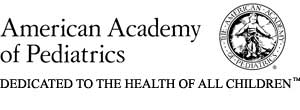

AMERICAN ACADEMY OF PEDIATRICS
Committee on Sports Medicine and Fitness
Horseback riding accidents can cause head injuries resulting in death or permanent residual defects. These riding injuries occur most frequently in riders younger than 21 years of age. [1] Approximately 20% of injuries in young riders are to the central nervous system. [2,3] The majority of these injuries are cerebral contusions, concussions, or skull fractures.3 Use of approved helmets has been associated with a decline in the occurrence of severe head injuries. [4]
In the early 1980s, numerous organizations (American Horse Shows Association, United States Pony Club, United States Combined Training Association, and the United States Equestrian team) began requiring all competitors to use helmets meeting the United States Pony Club Standard. This standard was developed by the National Operating Committee on Standards for Athletic Equipment. [5] In 1988, the American Society for Testing and Materials (ASTM) passed new standards (ASTM F-1163) for equestrian helmets that required helmets to provide a higher level of protection than previous models. [6] This is an industry-wide standard that replaces previous standards. As of March 1990, the United States Pony Club required use of these new helmets for all activities. [7]
New helmets that meet the ASTM standard will be certified by the Safety Equipment Institute (SEI), a compliance organization responsible for certifying industrial products. The SEI seal, containing the date and manufacturer's lot number, must be permanently applied to the inside of the helmet so the buyer will know it is an approved equestrian helmet.[7]
The American Academy of Pediatrics (AAP) recommends the following steps for preventing and/or lessening the severity of horseback riding-related injuries:
The recommendations in this statement do not indicate an exclusive course of treatment or serve as a standard of medical care. Variations, taking into account individual circumstances, may be appropriate.